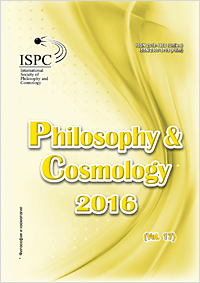Creating a Universe, a Conceptual Model
Creating a Universe, a Conceptual Model
Author(s): James JohnsonSubject(s): Philosophy, Metaphysics, Philosophy of Science
Published by: Международное философско-космологическое общество
Keywords: laws of nature; initial conditions; big bang; multiverse; space; spacetime; fine- tuning; creation; cosmology; metaphysics;
Summary/Abstract: Space is something. Space inherently contains laws of nature: universal rules (mathematics, space dimensions, types of forces, types of fields, and particle species), laws (relativity, quantum mechanics, thermodynamics, and electromagnetism) and symmetries (Lorentz, Gauge, and symmetry breaking). We have significant knowledge about these laws of nature because all our scientific theories assume their presence. Their existence is critical for developing either a unique theory of our universe or more speculative multiverse theories. Scientists generally ignore the laws of nature because they “are what they are” and because visualizing different laws of nature challenges the imagination. This article defines a conceptual model separating space (laws of nature) from the universe’s energy source (initial conditions) and expansion (big bang). By considering the ramifications of changing the laws of nature, initial condition parameters, and two variables in the big bang theory, the model demonstrates that traditional fine-tuning is not the whole story when creating a universe. Supporting the model, space and “nothing” are related to the laws of nature, mathematics and multiverse possibilities. Speculation on the beginning of time completes the model.
Journal: Philosophy and Cosmology
- Issue Year: 17/2016
- Issue No: 17
- Page Range: 86-105
- Page Count: 20
- Language: English

